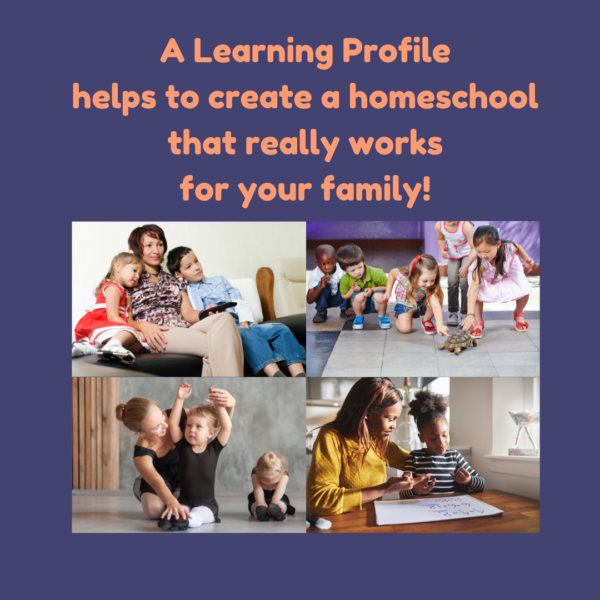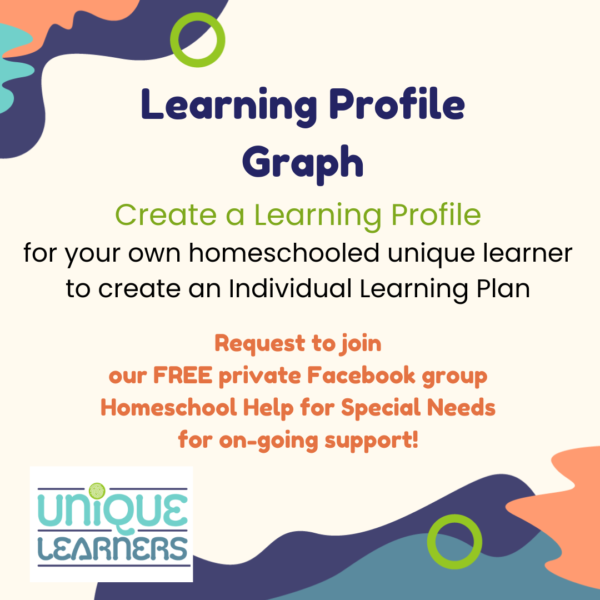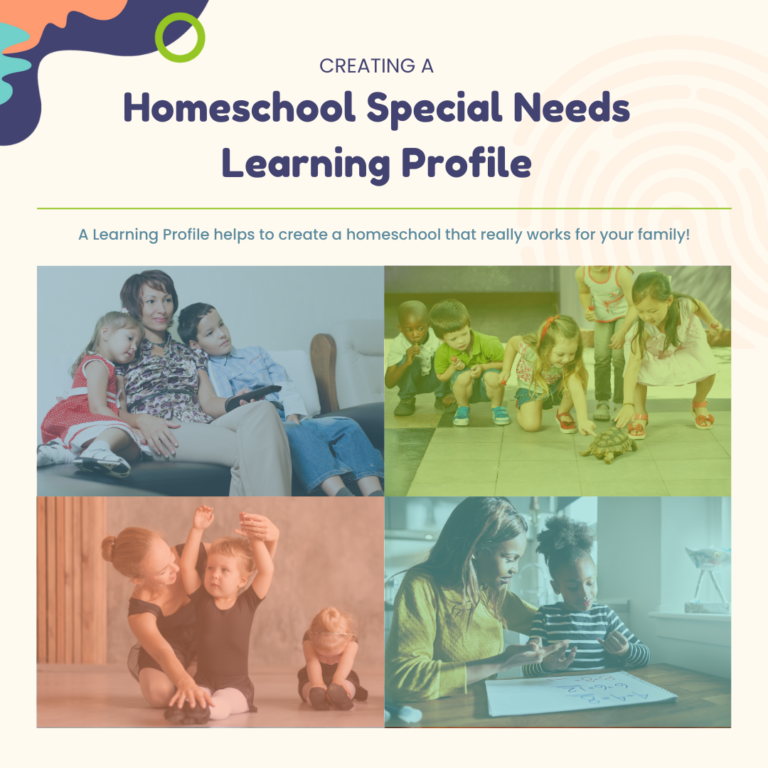How to Create a Homeschool Special Needs Learning Profile
Creating a learning profile for a special needs homeschooler involves understanding their unique strengths, challenges, and learning preferences. This guide will walk you through the steps to develop a comprehensive learning profile that will serve as a roadmap to a successful homeschooling experience. Scroll down to get a FREE Learning Profile Graph to help you create a special needs learning profile from your own observations and knowledge of your child.
If you want more help or information about creating a learning profile for your kiddo, you can watch our training video on YouTube by clicking here.

Step 1: Gather Relevant Information
Begin with Assessment:
If you have a formal diagnostic assessment, that’s great! You can use the report from your clinical psychologist, school evaluation team, or neuropsychologist to record results and create a profile. Otherwise, conduct an informal assessment to understand your child’s current academic, social, and emotional levels.
There are 2 reasons for getting a formal diagnostic assessment by a psychologist or neuropsychologist. The first is to qualify for services. This is the primary reason public schools conduct an evaluation. While the tests and report are often identical to the private sector, schools will only administer those needed to verify a child’s diagnosis or to gain enough information regarding standard deviations of academics and report functional behavior. The scores are used to qualify and assign a least restrictive environment and number of minutes of specialized instruction that a child will receive. This information is all included in a child’s IEP.
Many parents who pull their child from public school do not realize that in most states and school districts, they will waive the right to an IEP. That may seem tragic to some; however, in a homeschool, a child can receive specialized instruction throughout the whole school day and social activities, monitored by the same providers for consistency in training!
Most parents can learn the techniques used by specialists if they have a consultant who will work with them to learn what strategies will work for their own child.
If you would like an individually administered, standardized assessment or a diagnosis for a learning issue, you are welcome to contact us at Unique Learners to set up an initial appointment.
If you would like a network of other homeschool parents of kids with special needs, request to join our Facebook group: Homeschool Help for Special Needs.
If you would like guidance for curriculum or teaching strategies, contact Sue about professional consultation services. Sue is always happy to help homeschool parents find what works best for unique learners!
Step 2: Recognize Learning Differences
Observe Strengths and Weaknesses:
Determine how your child learns best and what areas present struggles. Most often the skills areas are involved in learning disabilities, like dyslexia or autism. Phonics, spelling, reading, writing, and learning math facts or processes are so very difficult for some kids. Others learn to read easily, but memory issues, including working memory, can hinder thinking skills and cause struggles with recalling content knowledge.

Identify Strengths and Interests:
So, the first step in creating a learning profile for your child is to list your child’s strengths, interests, and anything that motivates them. Be confident. Be realistic. You don’t need a formal assessment to know what areas are your kiddo’s preferred activities. This can range from academic subjects they excel in to extracurricular activities they enjoy.
Acknowledge Challenges:
Take note of any specific learning disabilities or behavioral challenges. This might include dyslexia, ADHD, or autism spectrum disorders, and consider how these affect their learning process. Many kids who are just starting to homeschool run through a honeymoon period for the first few months. However, you know your child’s behaviors and communication style, as well as your family situation. Challenges could be working parents’ jobs, a new baby on the way, elderly grandparents who are needy, lack of social resources. One of the toughest challenges I hear often is about compliance and complaining from kids who refuse to do school work. Make a list of any and all challenges you think you will face in the up-coming year.
Use the Special Needs Learning Profile to Set Up a Homeschool that Really Works!
Creating a special needs learning profile for your homeschooler requires observation, a realistic mindset, and a willingness to be flexible.

The learning profile is a launching point to develop an Individual Learning Plan of goals to create a deliberate focus for utilizing a kid’s strengths for working on the hard stuff, like reading, writing, and math while building enthusiasm and self-confidence for learning content! By tailoring the educational experience to fit your child’s unique profile, you can foster a learning environment where they can thrive academically and personally. A learning profile can also help in curriculum selection and teaching strategies that will actually work rather than trying out curriculum that looks appealing, but ends up wasting a ton of money and time!
Remember, collaboration with support groups can also offer valuable insights into your child’s educational journey. We invite you to join our private Facebook Group: Homeschool Help for Special Needs for on-going support for learning, behavior, planning, teaching, and pretty much all things involving homeschooling kids with special needs.

